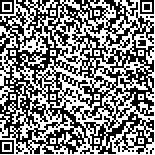下载中心
优秀审稿专家
优秀论文
相关链接
摘要

红树林作为热带和亚热带海岸带上特有的森林群落,具有独特的生态功能以及重大的社会、经济价值。中国红树林经历了反复的破坏与保护,遥感监测手段可以为实施大规模的红树林生态系统保护和恢复行动提供科学技术支撑。本研究依托Google Earth Engine平台提出一种时空概率阈值法对中国红树林范围进行提取。研究选取2015年516景Landsat 8数据,首先使用非监督分类法进行水陆分离,其次通过生成缓冲区确定红树林潜在生长区,然后协同多种指数与光谱信息构建多特征决策树提取红树林粗略的生长范围,最后基于长时序的红树林粗略范围数据计算红树林生长概率,并通过实验确定概率阈值对红树林进行精细提取。通过实验对比发现时空概率阈值法的红树林生产者精度达90.36%,且能较好地提取幼小、分散的红树林。研究得到了2015年中国红树林分布结果,全国红树林面积为21932 ha,广西和广东两省红树林面积占中国红树林总面积的73.22%,为中国红树林主要分布区域。
As an appropriate forest community in tropical and subtropical coastal zone, mangrove has unique ecological function and great social and economic value. However, mangroves globally are decreasing at an average rate of 1% per year and are facing threats, such as the reduction of biodiversity and the degradation of ecosystem service functions. Mangroves in China have experienced repeated destruction and protection, and remote sensing monitoring can provide scientific support and decision-making reference suggestions for implementing large-scale mangrove ecosystem protection and restoration in China. Based on Google Earth Engine platform, this study proposed a Spatio-temporal Probability Threshold Method to extract mangrove extent in China, and it is conducive to analyzing the temporal and spatial changing trends of mangroves in China.In this study, we selected 516 images of Landsat 8 in 2015. We used unsupervised classification for land-water separation, and then generated the potential growth area of mangroves. A multi-feature decision tree classification method was constructed based on multiple indexes and spectral information to extract rough mangrove growth extent, and the mangrove growth probability was further calculated based on long time-series data. The probability threshold was determined through experiments to extract precise mangrove extent. In addition, we set up four comparative experiments for mangrove extraction, using two decision tree classification methods (based on spectral indices only and based on original bands only) and two supervised classification methods (CART and SVM).Results show that the best mangrove probability threshold is 0.5, and the producer’s accuracy for mangrove is 90.36%. CAS_Mangrove dataset has the highest producer’s accuracy for mangrove (91.73%), but the details of the edge are inaccurate; the producer’s accuracy for mangrove of GMW dataset is the lowest (64.64%), thereby ignoring the young and scattered mangroves. All methods of four comparative experiments overestimate the mangrove extent in varying degrees. The total area of mangroves in China in 2015 extracted by the proposed method is 21932 hectares.This study proposed a Spatio-temporal Probability Threshold Method for mangrove extraction, considering the impact of tidal inundation from a new perspective through the mangrove growth probability. This method has high accuracy (90.36%) of mangrove extraction, and it can extract young and scattered mangroves effectively. According to the study, the distribution of mangrove in China in 2015 was obtained, and the total area of mangroves in China is 21932 hectares. The mangroves are mainly distributed in Guangxi and Guangdong, accounting for 73.22 percent of the country’s area. Compared with the method of selecting images at low tide for mangrove extraction, Spatio-temporal Probability Threshold Method makes full use of Landsat data, which are simpler and faster, and avoids the high uncertainty in the artificial coastal area.

